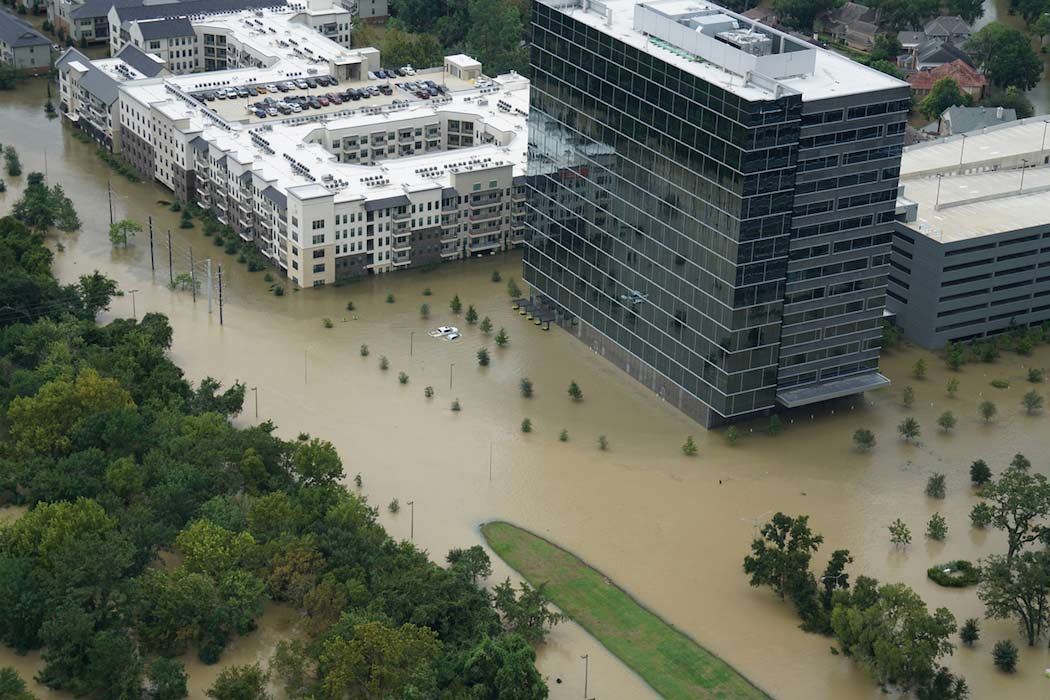In the past two weeks extreme weather events have nearly drowned parts of Texas, wiped out several iconic Caribbean islands, and left thousands of people without homes in Mumbai. But while Mother Nature’s wrath can be unpredictable and random, research suggests that humankind is ultimately responsible for much of the misfortune caused by “natural disasters.” As people are recovering from recent catastrophes all around the globe, we look into a few lessons we are learning from our planet’s weather and our own actions.
Development and disasters—a deadly combination well beyond Houston (Propublica)
Harvey’s economic tolls are still being tallied, but the numbers look grim. “In the Houston metro area alone, there is more than $325 billion in residential value at risk,” Kevin Simmons, an economist at Austin College who focuses on storm impacts, told Propublica. Between damage to residential and commercial property, lost business, ruined cars, and absence of flood insurance—as many affected areas were considered to be outside the flood zone—the cost of this unprecedented calamity might exceed Katrina. But while climate change plays a role in intensifying natural disasters, so does human land management.
Our disaster resiliency depends on where and how we build our urban and suburban sprawls. For example, scientists studying disaster impacts warn that our increasing and expanding development is placing more people and their possessions in the potential path of tornadoes. As more people chose to live by the water, the coastal development increases, leading to the destruction of estuaries and marshes, which act as storm protectors. Recent surveys note that almost a half of U.S. population now lives in coastal areas, and studies are estimating how many of them live in a 100-year coastal flood zone. So if humans continue putting construction before caution—such as recently revoking President Obama’s executive order to review flood risks before building homes or other structures in order to speed up development—we will lay the foundation for more catastrophes. Unfortunately, de-regulation and lack of oversight, will only worsen the natural disasters’ effects and aftermath.
How farmers convinced scientists to take climate change seriously (Washington Post)
When the United States began its atmospheric nuclear bomb testing in the early 1950s, farmers were one of the first to protest. Convinced that the explosions were intensifying hurricanes and tornados and triggering torrential rains and hailstorms as well as one of the worst droughts in the country’s history, the farmers petitioned the government to cease testing because of “atom weather.” An investigation was launched to examine the possibility of atomic explosions causing the drastic weather flukes. The claim didn’t seem to hold. In fact, some of the weather fluctuations appeared to be almost the opposite of what the nuclear blasts could have caused. Most theories suggested that, if anything, atomic bomb testing would increase rainfall, but the country was actually experiencing a prolonged drought. If an increase in atmospheric dust generated by the explosions, blocked the solar rays, the temperatures would decrease, but instead the weather tended to be warmer, not colder. Plus, as scientists pointed out, that amount of the spewed out dust was considerably less than some volcano eruptions had caused in the past. But while the “atom weather” theory didn’t prove, it navigated scientists towards modern-day climate research.
Fire ants, yet another hazard in Houston’s flooded streets (The New York Times)
As if plodding through chest-deep water and avoiding stranded alligators weren’t enough, Houston residents had yet another environmental hazard to watch out for: fire ants. Called so for their painful and dangerous sting, which can cause a lethal allergic reaction in some people, the ants had evolved in Brazilian wetlands and are much better at dealing with deluges than humans. When their colonies flood, the ants secrete a sticky discharge that helps them cling together and form rafts that can float on the water for days and miles.
Fittingly named Solenopsis invicta, in which invicta means undefeated or unconquered, fire ants had likely arrived to North America on some cargo ship in the early 20th century. Since then the ants have pretty much conquered the American South and as are now moving up north, taking advantage of warmer winters. Normally, fire ants don’t travel very long distances, but floods help them spread to new locales and colonize new places. Scientists call these occurrences jump-dispersal events. The ants are a health hazard and environmental pests, but their unique flotation abilities have attracted many curious minds. When researchers studied the physics, forces, and materials that hold the ant rafts together, they found certain similarities to human-built flotation devices. And engineers observed the ants’ teamwork in hopes to design small robots that can work in concert, building structures such as emergency bridges.







